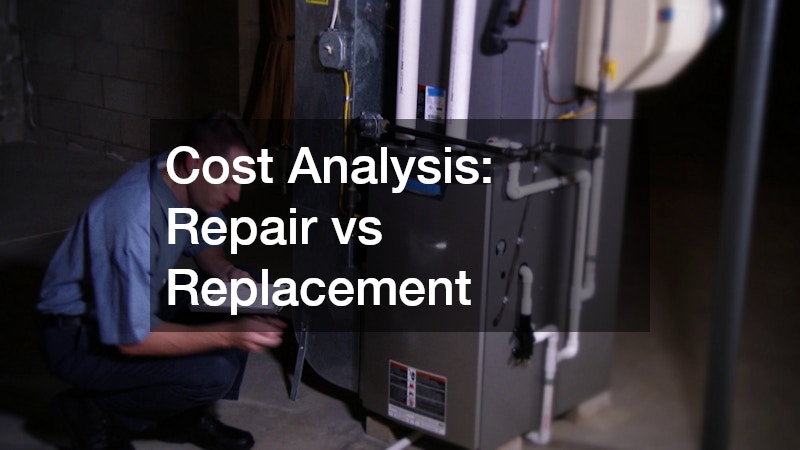Understanding when to replace your septic tank instead of just repairing it can save you time, money, and prevent potential environmental hazards. While regular maintenance can extend its life, there are clear signs indicating a replacement is necessary. Knowing these signs is crucial for maintaining the efficiency and safety of your home’s waste management system.
Common Signs That My Septic Tank Needs Replacement
Persistent Drain Field Failures
Drain field failures that occur repeatedly despite regular maintenance may indicate a more serious underlying issue, necessitating a septic tank replacement. When the drain field fails, the wastewater cannot be properly absorbed into the soil, leading to potential flooding or contamination.
Frequent drain field issues can also result in unpleasant odors and groundwater contamination, posing health risks to your family and neighbors.
It’s important to recognize that minor repairs to the septic tank or drain field might not resolve the root cause of these failures. Persistent issues often point to the need for a comprehensive assessment of the entire system. Sometimes, drain field problems stem from soil saturation, which requires significant intervention and possibly a full replacement of the septic system to ensure long-term functionality and efficiency.
Regular inspections by septic professionals can help identify these persistent failures early on. They can assess whether the system needs more than mere repairs. On many occasions, upgrading to a modern septic system that accommodates current household waste production can prevent repeated drain field failures and maintain a clean environment.
Frequent Pumping Requirements
If your septic tank requires pumping more often than usual, it may be a sign that the system is no longer adequately processing waste and needs to be replaced. Properly functioning septic systems typically need pumping every three to five years, so more frequent intervals can indicate inefficiencies. The tank’s decreased capacity to manage waste can lead to backups and potential overflow into the drain field.
Frequent pumping requirements often suggest that the septic tank’s operational capacity has been exceeded either through increased household usage or changes in waste composition. This can be due to environmental factors, such as tree root intrusion or outdated system designs. A professional assessment can determine if structural factors or increased use necessitate a full replacement to meet the demands of contemporary waste management needs.
How Do I Know If Repairs Won’t Suffice?
Structural Damage to the Tank
Examine for any visible cracks, corrosion, or physical damage that may compromise the integrity of the tank and render repairs ineffective. Structural issues can stem from age, poor installation, or exposure to environmental stressors like shifting soil or nearby tree roots. Such damage, if unchecked, can lead to leaks, contamination, and potentially catastrophic system failure.
While some minor structural damage can be repaired, significant or recurring damage often warrants a replacement. Temporary fixes might extend the usable life of the tank short term, but will not offer a long-term solution. Seeking professional advice regarding the extent of damage is crucial in deciding whether repairs are sufficient or a total replacement is needed.
Over time, older septic tanks, especially those made of steel, can rust, leading to serious decay. Advanced deterioration compromises the tank’s structural integrity and effectiveness, necessitating a replacement to ensure continued safe waste management. Regular inspections can help detect early signs of structural deterioration and recommend an action plan before the damage becomes irreparable.
Unusual Odors and Water Contamination
The presence of foul odors or contaminated water can indicate that the tank’s internal structure has failed, potentially requiring a whole system replacement. These issues can arise when waste is not effectively processed, leading to odors escaping from drains or water sources. This not only poses a health risk but also signifies a breach in the tank’s functioning system.
Odors emanating from the septic system often point to malfunctions such as blockages, system overload, or inadequate venting and pumping. Persistent and unmanageable odors, even after standard maintenance, suggest systemic failures or irreparable internal damage. Contaminated water supplies can further confirm that the waste treatment process is compromised, necessitating urgent replacement considerations.
What to Consider Before Opting for Replacement
Age and Material of the Septic Tank
Evaluate the age and construction material of your septic tank to determine if it’s reaching the end of its functional life. Older tanks, especially those constructed from steel, are at a higher risk of deterioration due to corrosion. Concrete tanks, although generally more durable, can also develop issues like cracks over time.
The average septic tank lifespan ranges between 20 to 40 years, depending on maintenance and environmental factors. If your tank is nearing or surpassing this age, a replacement could prove more cost-effective compared to cumulative repairs. Modern materials offer improved durability, making a newer tank a wise investment for long-term reliability and service.
Cost Analysis: Repair vs Replacement
Conduct a cost-benefit analysis to see if the long-term investment in a new septic system might be more economical than continual repairs. Repairs might seem cost-effective initially, but can accumulate over time, surpassing the expense of replacement. Considering factors like longevity and reduced maintenance, a new system can offer better value.
Evaluate both immediate and future costs when assessing whether to repair or replace the septic system. Replacement often entails upfront expenditure, but it also brings benefits such as warranty coverage, system reliability, and compliance with current health and environmental regulations. Factoring in these considerations provides a clearer financial perspective for decision-making.
Determining whether to repair or replace your septic tank involves assessing signs of failure, examining the tank’s physical condition, and considering the costs. Proper diagnostics and consultations with professionals can help in making an informed decision, ensuring safe and efficient waste management for your property. By being proactive and educated about your septic system, you can prolong its life and maintain a healthy living environment.


